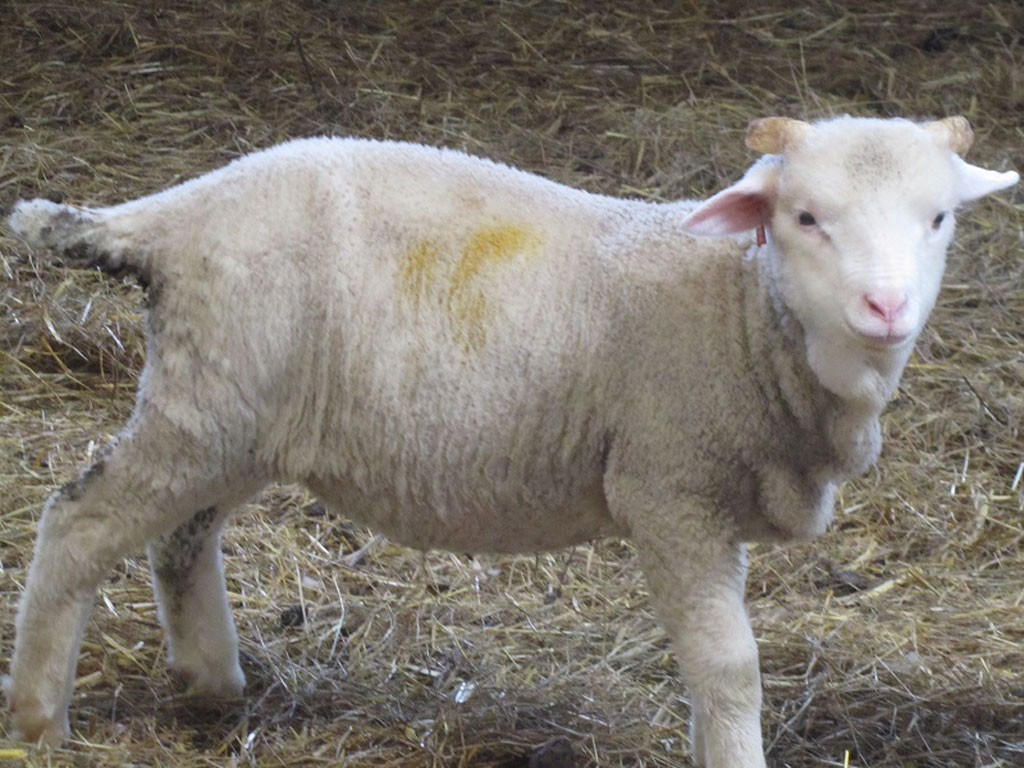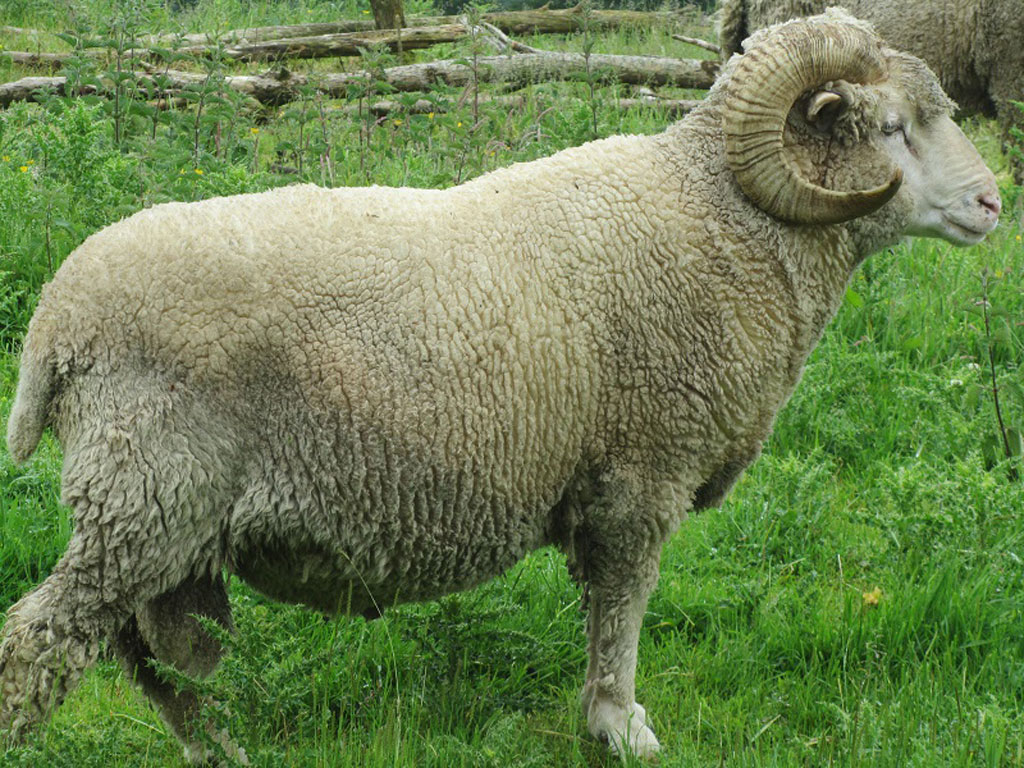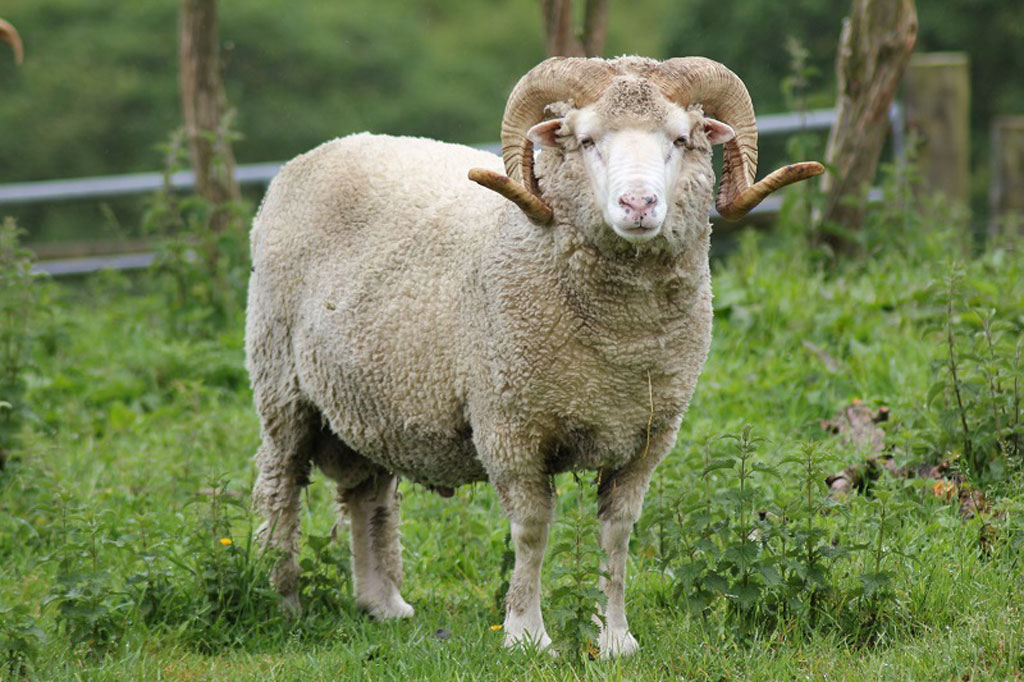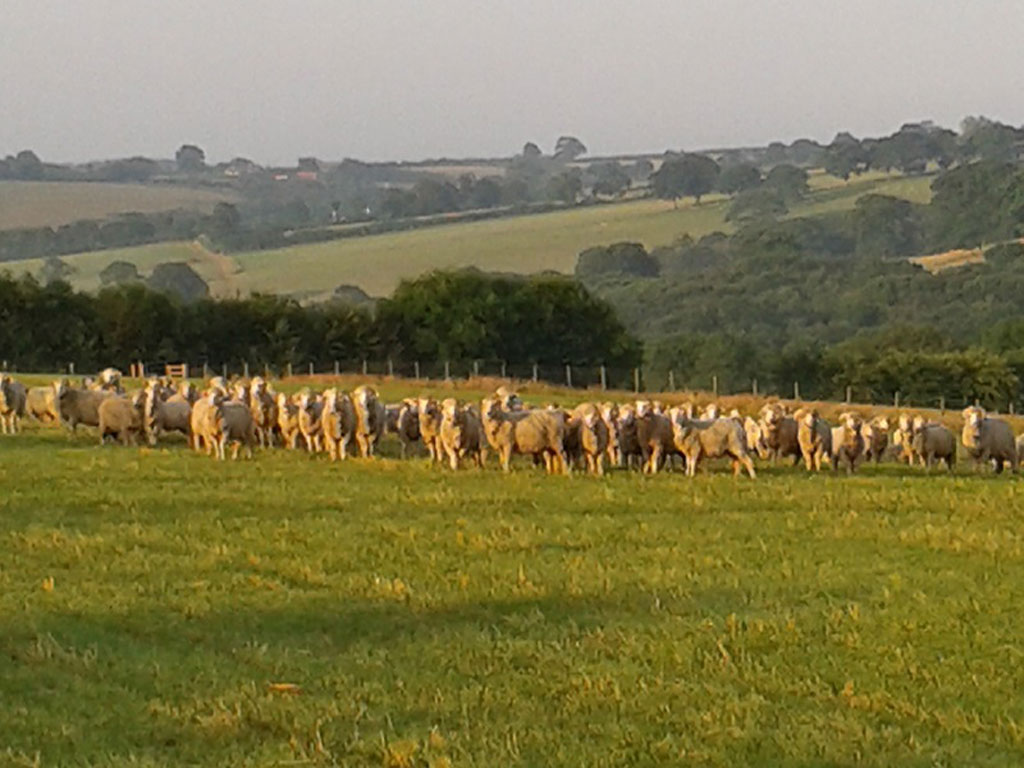[vimeo http://vimeo.com/64629692]
If you followed WOVEMBER last year, you will already know a little about the work that Lesley does for WOOL! Last year, Lesley and Finisterre provided an amazing series of posts detailing how the fibre grown on Lesley’s farm is turned into beautifully soft sweaters which are made entirely in the UK, and which are designed for a mass market:
‘The pinnacle of our ambition was to develop a legitimate UK fine fibre supply chain that would take British wool to the masses. Wool quantities now allow us to produce the 100% Bowmont Wool Jumper.’ – Finisterre
Lesley’s back this year and in keeping with the ‘Growing Wool’ theme, this first batch of posts cropped from her superb blog is all about the realities of keeping fine fibre animals. There is a single question and answer after each one, so that WOVEMBER readers have the latest updates on Tail docking, Ram maintenance, Sheepdog training and Soil testing on the Devon Fine Fibres Farm! All images used with the kind permission of Lesley Prior
April 1, 2013 – Tails from the Lambing Shed
I’ve been quiet of late since we are right in the middle of lambing and kidding. For all sorts of reasons, the two are running in parallel this year which makes for a busy not to say exhausting time. On Easter Saturday I went to bed at 10pm leaving DH in charge and got up again at 1.15am. I then spent the whole remaining night lambing a fiddly first timer and getting her to take her lamb, feeding some weak kids, feeding some hungry mothers, returning to new sheep mum and the “alien” she had spawned, feeding weak kids, feeding hungry mothers, returning to new mum etc etc – you get the picture!
The nature of my precious flocks mean that I am lambing and kidding much older animals than standard commercial flocks. This is because I need to get as much valuable genetic material from each of my females. The old girls need very special care and while they often lamb /kid easily, they may need help afterwards with extra food or the occasional supplementary bottle. They still enjoy their babies and it’s a pleasure to see how the old ladies fall into the routine immediately. Proper old pros!
This sounds busy and it is. I am just beginning to reach the point where help at night would be really welcome. Farmers who lamb only a few more than me generally have experienced help to call on. Maybe next year I will have to do this. However, I find it very difficult to let my sheep and goats’ care pass into the hands of another. Even DH doesn’t notice the initial tell tale signs of early lambing/kidding and he spends a great deal of time with them. Trust would be the thing. We shall see!
2013 Ram Lamb
Meanwhile I have a few management decisions to make. We have given up castrating ram lambs at birth. Firstly, you ALWAYS castrate the wrong ones (Sod’s Law) and secondly, when you intend keeping wethers for wool production for several years, it’s best to give them a few months growth so their urinary tracts get to a decent size. This lessens the chance of painful bladder stones developing. We have NEVER had bladder stones in a sheep but there is a theoretical increased risk in an adult wether.
No, the decision is on tailing – the application of a rubber ring to the tail to shorten it. We gave this up 3 years ago. It is already illegal in some EU countries and may possibly be so here in another few years. We have had few problems except this last year. The terrible weather meant our lambs had fluke and worms regularly and while of course they were treated, the dirty back ends meant some tails were in a terrible mess. Raymond our shearer did a great job cleaning them up but there were a few cuts and a lot of blood. Now THIS is just as much a welfare issue as tailing. Do I risk another year like this and leave tails or do I return to the practice? I don’t know. The jury is out for another 24 hours.
Time for a well-earned cup of tea I think before I return, once again to the barn.
WOVEMBER: Tail docking sounds like a very tricky area for shepherds to consider when it comes to the welfare of sheep; in your post you mentioned that there are welfare issues surrounding both the practice of docking tails AND the practice of leaving them undocked; what have you decided on this for the future of your animals?
Lesley: Having trialed not docking for 2 years, including of course the appalling summer of 2012, we decided this year to return to docking. The dirt and wet that gathered around sheep tails was a big welfare issue with tails so gummed up skin was pulling off when you tried to clean up the mess. Not good for the sheep. Tailing with a rubber band very soon after birth causes minimal discomfort and with careful and correct application, there is no welfare issue. The problems arise if people dock too short or use dirty equipment. Not an issue here. I’m glad I tried without though.
May 15, 2013 – Up Close and Personal with Rams
One of the very few advantages of this truly gruesome wet and cold weather is that, having brought our sheep back inside there is an opportunity to give some of them an MOT. This includes our rams.
5 year old ram with a 3 month old fleece
Currently I have 11 working adult rams. All of them are quiet characters, but independent you might say! It took 2 grown men to hold each of them yesterday while I gave them a pedicure and, (my least favourite job on the farm!) dagged out their bums. After being outside on lush grass for 3 weeks they were running in muck and if I don’t clean them out now it sets hard as concrete round their fleece as it grows and causes endless problems.
“Hold still you b…!” was a typical soothing phrase I used on a few occasions. “I don’t think he likes you interfering with his nether regions!” one of my helpers piped up. Extreme understatement as there is absolutely NO doubt the rams felt their dignity was seriously compromised – and in front of their mates as well! Not good for ram-bo street cred!
I shall treat them with a preventative for fly strike as soon as there is any prospect of dry weather for a few days and then hopefully I can turn them out and let them enjoy summer without the need to disturb them again.
Turnover crates are used by some farmers to do this work (do exactly what the name says – sheep walks in, press a lever and the sheep is turned upsidedown) and while they seem incredibly attractive to those of us with aching backs, they don’t work well with horned sheep apparently so until I can afford to import the Australian versions which are designed for Merinos, I shall rely on my 2 men folk for help!
Later in the day I worked quite hard on the other end of the wool chain – in connection with my role in The Campaign For Wool I was sourcing a commercial knitting company for someone and talking to 2 people with ideas for promoting wool. I regard myself as very privileged to have both ends of this incredible chain in my hands at times. Both are precious and delicate – one end because you are dealing with living, sentient creatures, and the other, because often you are dealing with people’s dreams and ambitions. “Handle with care” is my motto for both ends although sometimes that can involve being quite tough!
Teenaged Ram
WOVEMBER: Many shepherds around the country will be putting rams to ewes during WOVEMBER: Is that the case on your farm? I love rams; the few that I have met are masculine, proud beasts with a bit of a strut! I have also realised – from visiting sheep farms in January – that they work very hard over the winter! Could you tell us about one of your Bowmont rams and about what they will be up to this WOVEMBER?
Lesley: Yes my rams have now gone in with their ladies. We have 13 rams at the moment but this year I am using only 4 out in the field and some others are going for semen collection. We are also using AI on some ewes. One of my very best rams is number 145, Ajax by name. He is head honcho among the ram group and has the most stunning, bright white wool with an exceptionally long staple and even, fine crimp. Aged 5 his current fleece test puts him at less than 17 microns. He has changed less than 0.5 microns since his first fleece test as a lamb. He’s not very friendly but not aggressive. Just proudly independent. A star.
Ram 145 AKA Ajax, one month after shearing
June 12, 2013 – Come Bye or Not Come Bye
Those in the know, in the closed world of sheep and sheep farming, will recognise “Come By or Not Come By” as the instruction a shepherd gives to his dog when he wants it to go round the sheep in a clockwise direction. I’m playing with words of course. “To Buy or Not To Buy” a new sheep dog is what I’m really talking about.
Belle, my current dog is now 10 years old. She has a damaged nerve in her shoulder which means a wasted muscle at the shoulder joint and a reluctance, understandably, to use her leg properly. 8 months of rest have led to some improvement but at 10, she is very much at the end of her career as a working dog.
To be fair to her, she has never been “One Man and his Dog” material but always tried her best and between us, we have managed the sheep and goats effectively. At times she has covered herself in glory. On other occasions, anything but! Her work load has been light because initially we had very few animals but now, we are up to 150 sheep and 250 goats so moving on up as they say!
So far, I have managed both flocks by voice command. My animals will come to me. Without food. But, there are times when they are too far away, or it’s too windy for them to hear me shouting and that’s where Belle comes into her own. When fit, she would cover the 800 yards to the far field and give 26 bucks the message “Hey! She wants you! Get a move on!” A few seconds later, 26 big bucks with Belle behind would come running across the valley and screech to a stop at the gate asking, “Well? What do you want?” The time and effort that dog has saved is priceless.
The problem is, as Belle declines, do I go ahead and buy a replacement pup and start the long, careful process of training, or do I just go on hoping I can manage without until it’s too late? Building a relationship with a new pup takes no end of time and energy and the bond must be made fast and strong if dog and shepherd are to work as they should. Do I have the time and do I want to put Belle to one side while I do it? The answer to both is no but it may be a case of needs must. I haven’t found a pup yet but nor have I looked very hard. I can’t put off the decision much longer.
WOVEMBER: You might have already written about this elsewhere and we didn’t spot it, but what have you decided about Belle, your aging sheepdog? Have you decided to go ahead and get a pup to pick up her work, or will you go ahead using voice commands to round up your Bowmonts?
Lesley: Yes we have Bree, now aged 5 and a half months. She’s from fantastic working stock and is already doing very well. I’m training her myself (with help from some very knowledgeable local people) and hope to make her better than poor old Belle who has always been “good in parts”! The 2 of them get along so well. They look alike and everyone things they are mother and pup but in fact they are unrelated.
Belle & Bree
September 13, 2013 – Hidden Depths
I had a visit today from a forage and grassland specialist. We spent nearly 2 hours walking through my grazing fields assessing the quality of the sward (green bits you can see) and the soil underneath. In each field Colin took loads of core samples and turned over a spit of soil at regular intervals.
“Do you know, there are quite a few farmers who have NEVER EVER done this?” he said to me. “Been farming all their lives and never looked at the soil they rely on for their livelihood.“
I had a good idea what he was looking for. The presence or absence of earthworms, a hard pan layer at some point which means grass can’t penetrate downwards, evidence of cracking or layering and a funny smell. We both stuck our noses in the earth and had a good sniff every time he turned over a lump. Sweet good Devon soil. Lovely! Waterlogged or airless, “dead” soil smells stale.
“I often ask farmers what they think their most valuable asset on the farm is and most say their new tractor or, their new bull or something. No-one ever says their soil! But no soil, no grass, no grass, no animals. Simple!”
Soil-testing
I find this quite interesting. We are not Organic but this mantra, “look after the soil and it will look after you!” is exactly what the Organic movement proclaim. There is so much talk about the gaps between Organic and non-Organic farming that it’s good sometimes to know this fundamental principle is understood by all sides of the debate. The best farmers, whether Organic or not, treat their soil with respect and care.
I was delighted to know that ours is in pretty good shape. Good structure and lots of earthworms. We know our grass is in desperate need of lime because of our very low pH here but until we get the results of the soil tests back we wont know what else is required. That is a different issue from soil structure. Knowing we have the growing medium right means when we put lime on the grass will get a fantastic boost next Spring. If the soil structure was poor you could spend hundreds of pounds on lime, fertilizer, etc and waste your money!
The fields that are doing best are the old grass pastures which I over sow each year, by hand, with some good general ryegrass in the bare patches. The one which was clearly “hungry” was the new sown ley from last Autumn which is modern grass varieties only and not so tolerant of less than perfect conditions. All of them were declared “fit for purpose” to my surprise as I was convinced at least one needed a full re-seed. “Not at all. These old pastures just need management, not ripping up and starting again.” Good news and particularly from a company which sells grass seed as well as other things!
So, I have spent £72 pounds so far on some excellent advice and what will be a comprehensive set of test results. They will enable me to use my grass better next year and cherish it carefully. Looking after my grazing grounds is just another extension of looking after my precious animals.
Dawn in Summer
WOVEMBER: First of all, after your informative visit from the forage and grassland specialist, what will you be doing differently in coming years to improve the grazing grounds for your animals?
Lesley: Actually nothing new. The soil structure was fine and the “problems” such as they were, were due to this being a very acidic soil so nutrients are less available to the grass. A neutral pH is ideal for grass and allows the biochemistry of mineral uptake to take place. If it’s too acidic that can’t happen. So, for us, following the analysis, we have applied lime to correct acidity and will continue to spread our farmyard muck at the right time. It’s something we need to do about every 4 years as it’s not a permanent effect.
WOVEMBER: Thank you, Lesley!







